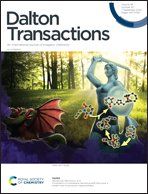Tuning of the electrocatalytic characteristics of PANI/Fe2O3 composite coating for alkaline hydrogen evolution reaction†
Abstract
The paper reports a simple and cost-effective strategy for the development of a stable and reproducible PANI/Fe2O3 composite coating as an efficient electrode for the electrocatalytic alkaline hydrogen evolution reaction (HER). The surface characteristics of the developed PANI/Fe2O3 composite coatings are tuned to achieve high hardness (510 HVN), thickness (26 μm), porosity, and surface roughness (Sa = 3.760 μm). The PANI/Fe2O3 composite coating with tuned surface characteristics (PANI/Fe2O3–2GL) facilitates the effective conduction of electrons from a highly conducting polymer to a metal. This increases the electron density on the coating surface and enhances the active surface area, which effectively enhances the hydrogen adsorption efficiency on the coating surface to improve HER activity. The composite coating exhibits enhanced HER activity with low overpotential (110 mV) and high exchange current density (95.32 mA cm−2). The mechanism of HER on the coating surface follows the Volmer–Heyrovsky reaction with the Heyrovsky step as the rate-determining step. The stability of the composite coating under aggressive reaction conditions even after long-term HER confirms its competency with commercial electrocatalysts.



 Please wait while we load your content...
Please wait while we load your content...